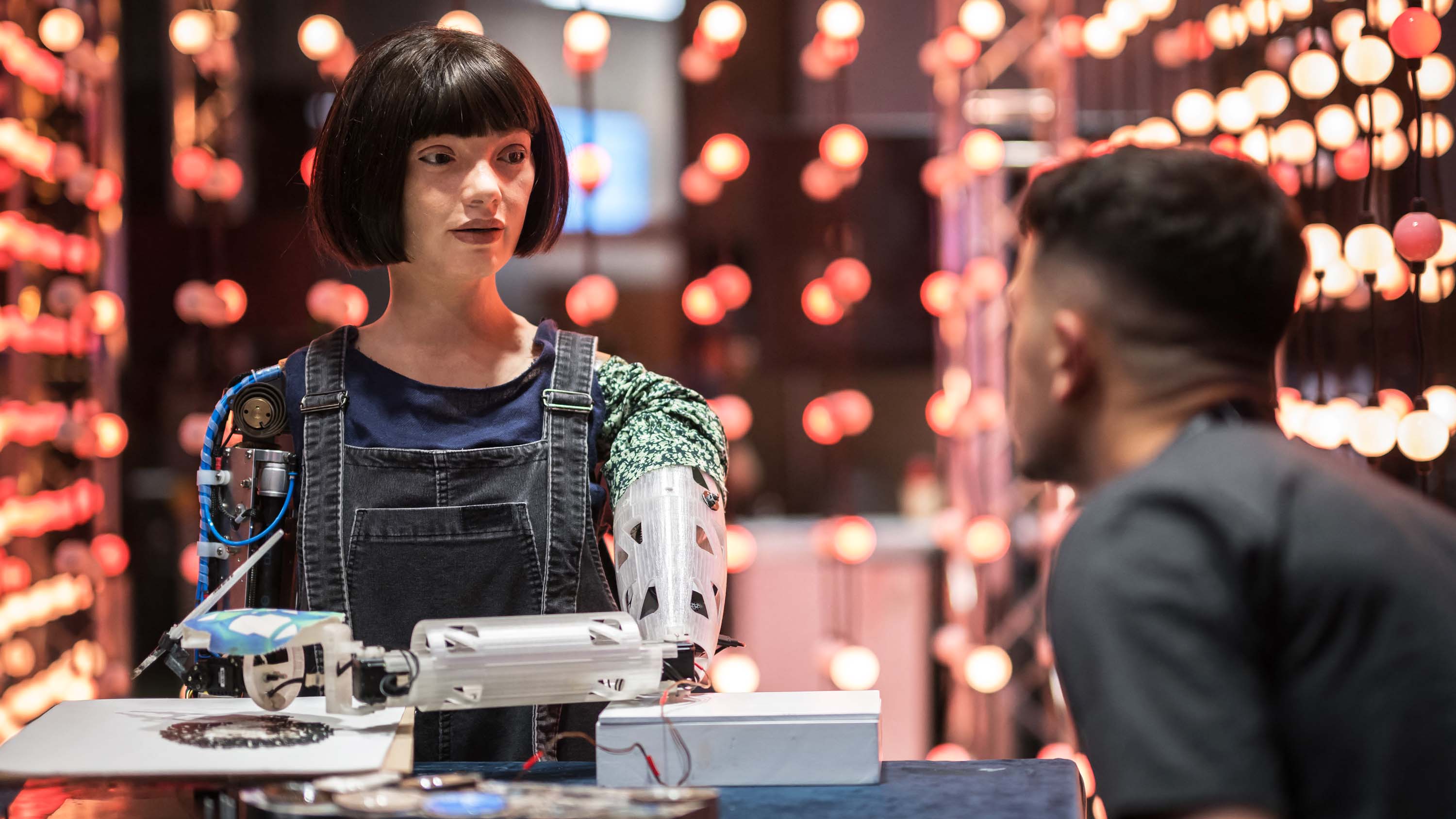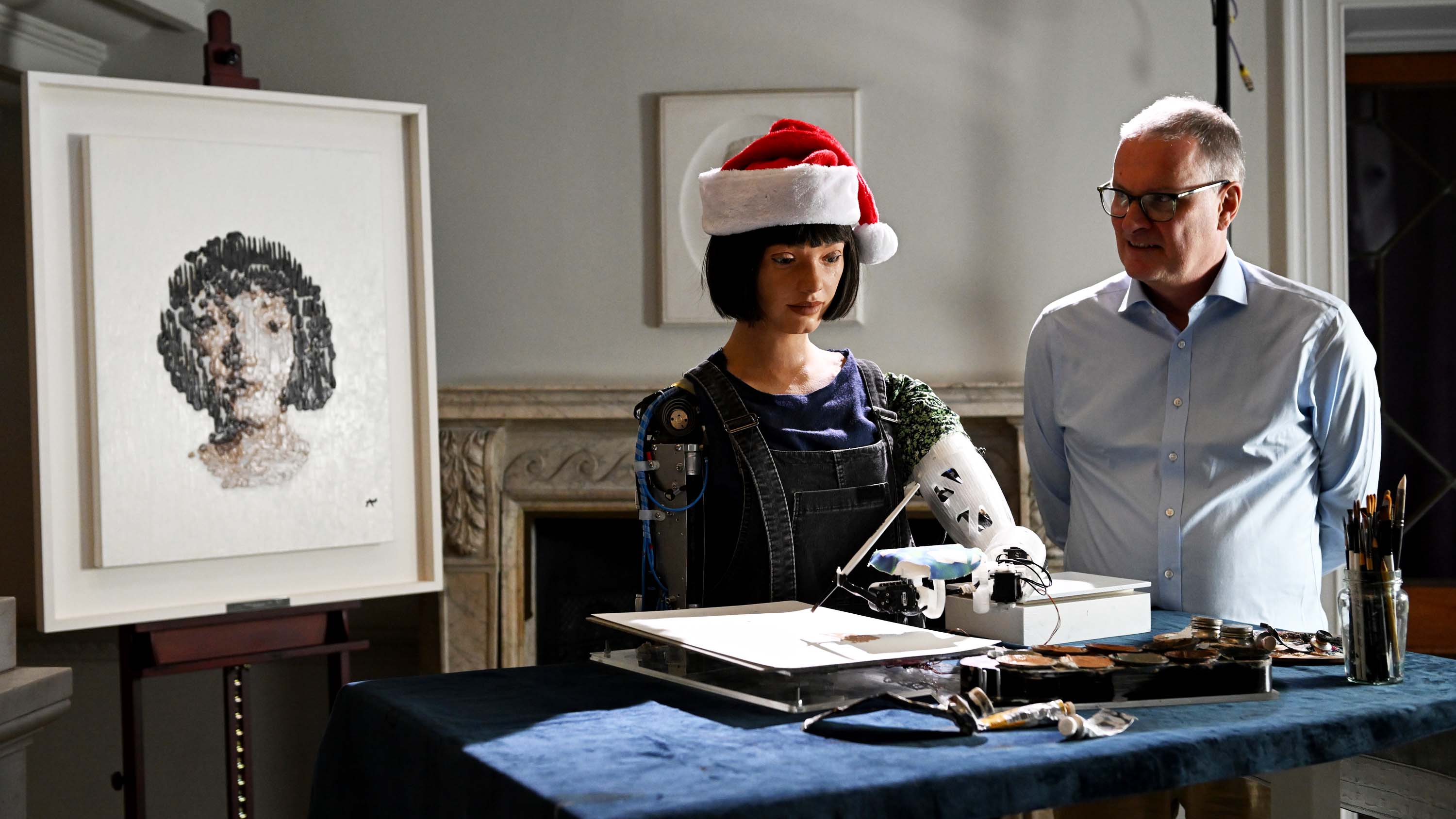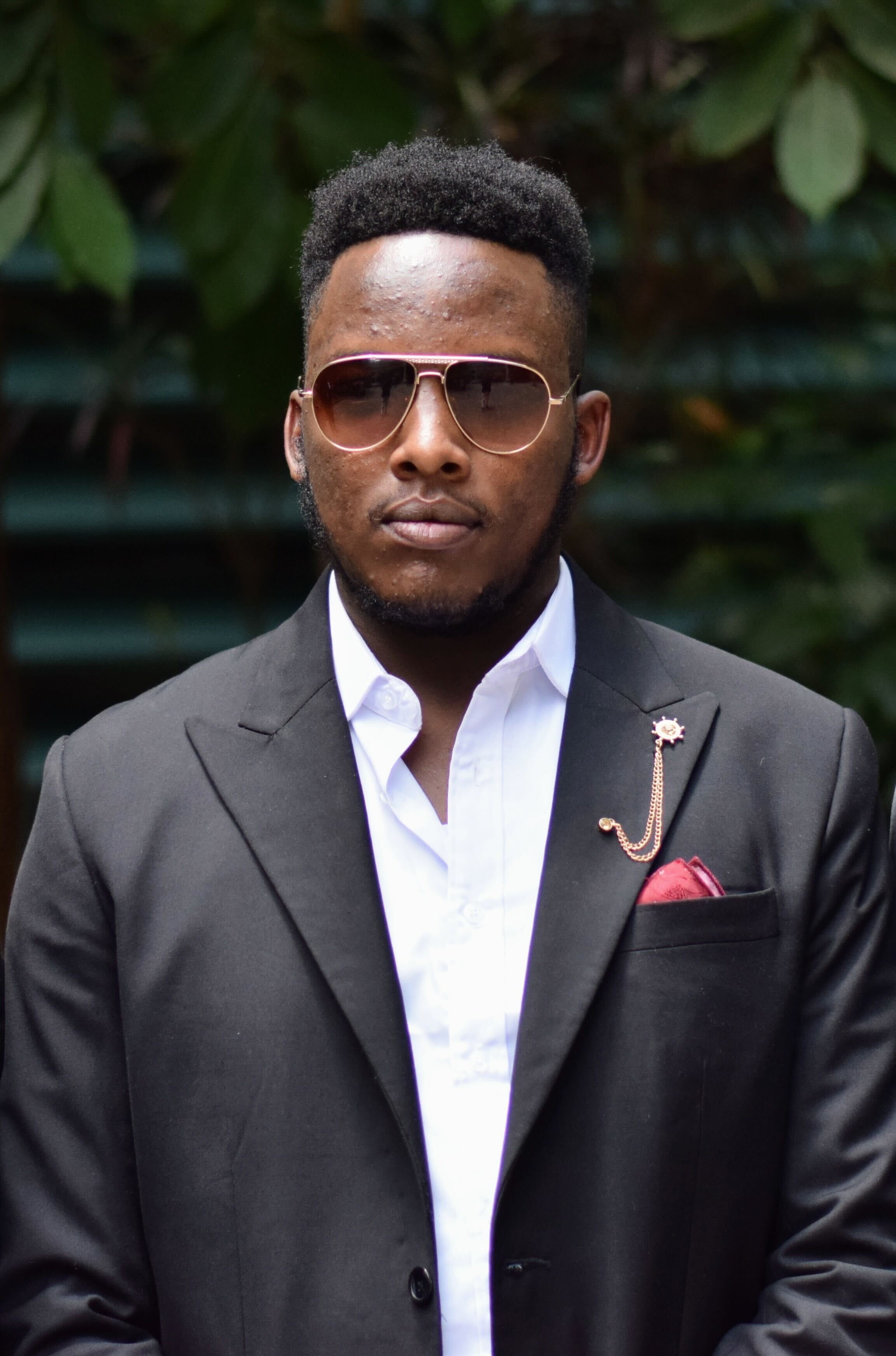$1M 'A.I. God' painting? Ultra-artistic humanoid robot creates uncanny artwork of British mathematician — representing "the struggles Turing warned we will face when it comes to managing AI"
A humanoid AI-powered robot recently generated a painting of a popular mathematician and computer scientist, auctioned at over $1 million though the initial estimate was set between $120,000 and $180,000.

What you need to know
- An AI-generated painting of British mathematician and computer scientist Alan Turing was sold for $1,084,800 (£836,667) at an auction. It was initially estimated to sell between $120,000 and $180,000.
- The painting was created by a humanoid robot called Ai-Da, featuring mute tones and broken facial planes that represent the struggles Turing projected humans would encounter while attempting to manage AI.
- The auction house indicates the sale of the AI-generated painting "marks a moment in the history of modern and contemporary art and reflects the growing intersection between AI technology and the global art market."
I've always found every form of art fascinating but not so much anymore — echoing Former X (Twitter) CEO and co-founder Jack Patrick Dorsey's sentiments from earlier this year:
"Don't trust; verify. You have to experience it yourself. And you have to learn yourself. This is going to be so critical as we enter this time in the next five years or 10 years because of the way that images are created, deepfakes, and videos; you will not, you will literally not know what is real and what is fake."
Art galleries often feature sophisticated and rare artwork and paintings, worth millions if not trillions. In a surprising turn of events, a painting of English mathematician Alan Turing was recently sold for $1,084,800 (£836,667) at auction (via BBC). Perhaps more interestingly, the painting was generated using a humanoid robot called Ai-Da. For context, the humanoid robot features ultra-artistic capabilities.
But who's Alan Turing, you ask? Turing was a British mathematician and computer scientist. He was often lauded for his technological contributions, with the vast majority calling him the father of theoretical computer science and artificial intelligence. You might also be conversant with the Turing Test, designed to assess a computer's capability to exhibit tendencies and intelligence reminiscent of humans.
The painting was originally estimated to sell for between $120,000 and $180,000 but the final selling price was well beyond estimations. While AI-generated work is often related to unoriginal work and deepfakes, the "A.I. God" painting received 27 bids.
According to the auction house:
"Today’s record-breaking sale price for the first artwork by a humanoid robot artist to go up for auction marks a moment in the history of modern and contemporary art and reflects the growing intersection between AI technology and the global art market.”
Get the Windows Central Newsletter
All the latest news, reviews, and guides for Windows and Xbox diehards.
Interestingly, the humanoid robot, Ai-Da, also shared some insights on its AI-generated painting. For context, the robot leverages AI capabilities to communicate. “The key value of my work is its capacity to serve as a catalyst for dialogue about emerging technologies,” Ai-Da indicated. "A portrait of pioneer Alan Turing invites viewers to reflect on the God-like nature of AI and computing while considering the ethical and societal implications of these advancements."
What is Ai-Da and its meaning to the future of artists?

Ai-Da is Aidan Meller's brainchild. For context, Meller is a specialist in modern and contemporary art, who worked closely with a team of artificial intelligence specialists from the universities of Oxford and Birmingham to develop the humanoid robot.
The artistic AI-powered robot generates ideas through conversations, prompting it to suggest creating an image of the British mathematician. It also heavily contributed to the painting's style, color, content, tone, and texture, which it generated into reality.
Meller indicated that the painting's mute tones and broken facial planes represent the struggles Turing projected humans would encounter while attempting to manage AI. Some of the issues highlighted could closely be related to the 99.9% probability AI will end humanity, according to p(doom).
There's also a rising concern over AI claiming jobs, leaving humans jobless, and turning work into a hobby. AI-powered tools like ChatGPT, Microsoft Copilot, and Midjourney are becoming more advanced, allowing them to generate sophisticated structural designs to the extent that they could render professionals in the built environment jobless.
However, there are concerns about the hostile takeover. For instance, while the tools have proven their strength in generating sophisticated structural designs in seconds, they fail at simple tasks like creating a plain white image.
Elsewhere, a controversial artist who won a painting contest in Colorado claims he's losing millions of dollars from people scrapping his AI-generated work without consent or compensation. Ironically, he'd previously indicated he wouldn't apologize for winning the context using an AI-generated entry after his fellow competitors complained. "I won, and I didn’t break any rules. This isn’t going to stop. Art is dead, dude. It’s over. AI won. Humans lost."
🎃The best early Black Friday deals🦃
- 🎮Razer Wolverine V2 Chroma | $59 at Amazon (Save $91!)
- 💽Samsung 990 Pro M.2 2280 SSD (2TB) | $149.99 at Newegg (Save $100!)
- 🖥️ABS Cyclone Desktop (RTX 4060) | $1,099.99 at Newegg (Save $400!)
- 💻Samsung Galaxy Book4 Edge (X Elite) | $849.99 at Best Buy (Save $500!)
- 📺LG OLED Curved Ultrawide (32-inches) | $889 at Amazon (Save $610!)
- 💻Alienware x16 R2 (RTX 4070) | $1,999.99 at Best Buy (Save $700!)
- 📺HP Curved Ultrawide (34-inches) | $299.99 at Best Buy (Save $180!)
- 💻Dell G16 Laptop (RTX 4060) | $1,199.99 at Best Buy (Save $400!)
- 📺LG C4 OLED 4K TV (42-inches) | $899.99 at Best Buy (Save $250!)

Kevin Okemwa is a seasoned tech journalist based in Nairobi, Kenya with lots of experience covering the latest trends and developments in the industry at Windows Central. With a passion for innovation and a keen eye for detail, he has written for leading publications such as OnMSFT, MakeUseOf, and Windows Report, providing insightful analysis and breaking news on everything revolving around the Microsoft ecosystem. While AFK and not busy following the ever-emerging trends in tech, you can find him exploring the world or listening to music.
